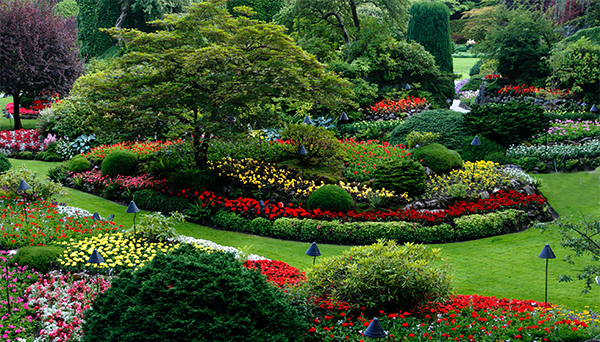News And Advice From The Leading Thousand Oaks Tree Trimming Company
Along with your trees, every plant in your yard needs three things to thrive: sun, water and nutrition found in the soil. Sun and water deserve their own separate discussions, so today let’s just talk about soil. Most homes, especially tract homes, are sitting on land that was probably pretty well abused during home construction. Often during the process of grading the lot, topsoil, organic matter and nutrients were carted away by the truckload. If you’ve been in your home for years, foot traffic and perhaps even vehicle traffic have compacted the soil in your yard. The roots of your newly planted trees and landscaping are going to have to fight to get through that compacted soil and search for nutrients that may not be there in sufficient quantity.

So, what to do about the situation? The answer: soil preparation.
Know Your Soil
What we commonly call dirt is in fact a magical mixture of minerals and organic matter, including the remains of fungi, insects and decaying plant and animal matter. Add to that list water and some gasses that you may not be aware of, including a mixture of oxygen, carbon dioxide and nitrogen. All of these elements combine to filter and store nutrients, and then release new nutrients.
Here in the Conejo Valley, your soil is probably a mixture of clay and sandy soil, but there are two other types — silty and chalky — that are possible.
Clay: This is a typical soil that is heavy and dense — too dense for your landscaping and trees to thrive. You can lighten it up by adding organic fertilizer, mulch and compost.
Sandy: Light and airy, sandy soil quickly warms up from sunlight. On the down side, though, it doesn’t retain water or nutrition very well. It requires a little more frequent watering in summertime, and also benefits from a good dose of organic matter.
Silty: The farmlands down on the Oxnard and Camarillo plain are great examples of silty soil that encourages vegetation to thrive. It’s rich and fertile and — although it’s sensitive to erosion and, surprisingly, could benefit from more organic matter — is great for growing everything in your yard. Be sure to use mulch or groundcover to keep it from weathering too much in hot weather, and mix in some organic matter.
Chalky: Look for whitish dirt to identify chalky soil. And you’ll also notice it dries out quickly in warm weather. The real problem with chalky soil, though, is that it doesn’t allow nutrient to freely circulate. Pump up this soil with plenty of organic matter.
Test Your Soil To Know For Sure
Visually identifying your soil type is iffy business at best. That’s why you should really perform a soil test to make sure you’re adding the right supplements. That’s where you’ll find out its pH, how much organic matter is in the soil and what kind and what levels of nutrients are in it. You should also definitely test your soil if it’s been years (or forever) since you tested it, or if your plants or trees are yellow or just not thriving. It’s also the first step in determining which supplements to add. Pick up a soil test kit at your local home or garden store, or do an online search for “soil testing” and take it from there. As always, if you need any help with your trees, or advice on prepping your yard for planting new trees, give us a call. We’re here to help!

